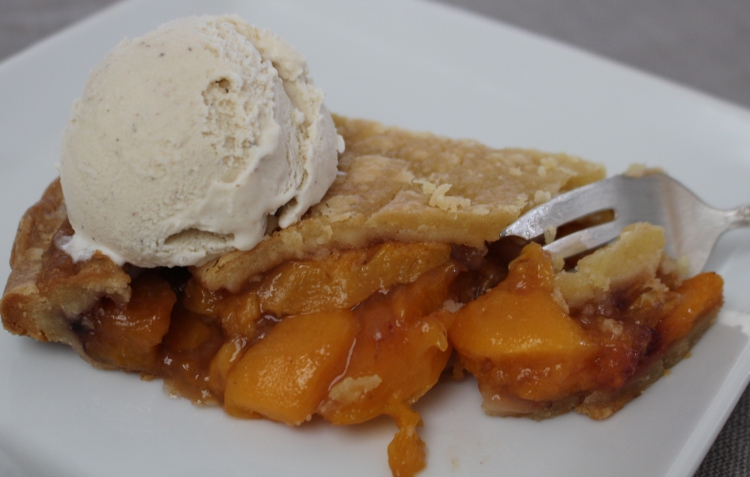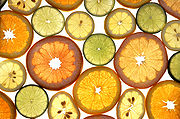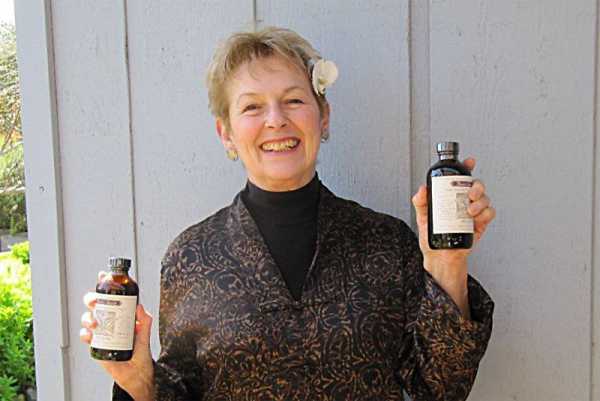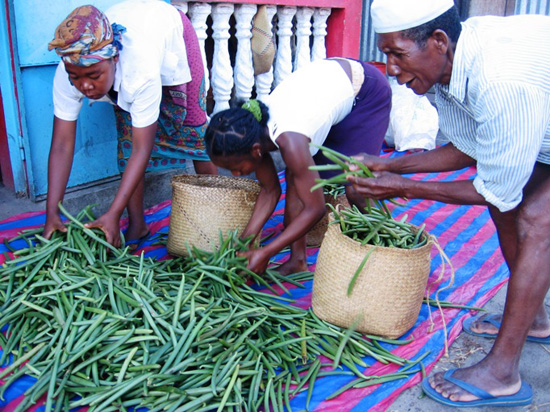
I'm amazed at how superior your vanilla is!
– Des, The Grommet

Lemon, Citrus limon, a most valued resource for culinary and medicinal purposes, is used in most parts of the world. Its origins are a mystery, but it is widely assumed that it originated in India, Northern Burma and China. It next traveled to Persia, Iraq and Egypt, and then around the Mediterranean. In Europe, lemon first arrived in ancient Rome. It was brought to Hispanola in the Americas in 1493, via Christopher Columbus. Lemons were planted in Florida and California in the 1700 and 1800s, where they were used for cooking and as a flavor. It is a tropical, sub-tropical and Mediterranean shrub, though some varieties grow as tall as trees.
The word “lemon” is derived from the Arabic limun, changing to limone in Old Italian and French. In addition to a myriad of culinary uses, lemons are used in aromatherapy as well as housecleaning, and lemon oil is used in treating wood. India produces the most lemons and limes worldwide, followed by Mexico, Argentina, Brazil and Spain.
The Meyer lemon, quite popular in California and other states, is actually a cross between a lemon and a mandarin. Its fruit is mildly sour and very fragrant. Lemon trees produce fruit throughout the year. The lemon tree can tolerate short periods of cold but does not do well in heavy frosts. The fruits will rot if they are frozen.
In 1747 James Lind determined that lemons would prevent scurvy for sea voyagers who had little access to fresh vegetables and fruit on long journeys. Its early medicinal uses included its antiseptic and antibacterial properties, and it was also used as an antidote for certain poisons.
Lime is a term for a number of citrus fruits with various levels of tartness and size. Shape varies from round to ovoid and size varies from very small to lemon-size, though typically, limes are smaller and more sour than lemons. In most cases limes are green when they are ripe, but the Key lime, also known as the West Indian lime, is yellow when ripe. Key limes are smaller, have a thinner skin, and are more tart than Persian limes. The Mexican lime is a distinct race of Key lime, with a thicker skin and darker green color. Kaffir is a variety of lime with a puckered skin. The leaves of Kaffir and some other limes are used in Southeast Asian cuisine.
Sweet Orange, Citrus sinensis originated in Southeast Asia and is an ancient hybrid of possibly a pomelo and a mandarin. Bitter Orange, Citrus aurentium is closely related to the sweet orange. For all of those who decry genetic engineering, many of the fruits, vegetables and flowers we now enjoy were tweaked hundreds or thousands of years ago, making genetic engineering hardly a new phenomena.
All citrus trees come from the same genus, Citrus, and are inter-breedable. In other words, they all come from a “super-species,” which includes lemons, limes, grapefruit and oranges. The fruits are considered berries, as they are fleshy and soft, have numerous seeds, and come from a single ovary. Citrus seeds are called pips and the white membrane inside the peel is called pith. Most oranges have ten carpals or segments.
The Persian orange was introduced to Europe in the 11th century and was sour. The Portuguese brought the sweet orange to Europe in the 15th century from India, and the oranges we know came from these sweet orange rootstocks.
The naval orange came from a single mutation in a Brazilian Monastery orchard of sweet oranges. At its base it has a very small, conjoined second orange. As it is seedless, it is sterile and must be propagated by cuttings or grafts.
The Valencia orange is a very sweet late-season orange, most used for its delicious juice. It is thin-skinned and not as easy to peel and eat out-of-hand. The blood orange has streaks of red through the flesh, is sweet and unique in appearance.
The word “orange” comes from the Sanskrit “narangah.” In Spanish it is “naranja” and in Italian, “arancia.” The name of the color “orange” came from the fruit in the 1500s. All citrus grows well in warm climates, but can also be grown in temperate or Mediterranean climates. The fruit will be sweeter or more sour, depending on the climate. Citrus does not do well with prolonged chill or frost. Some oranges will turn from orange to yellow when they remain on the trees as mature fruits.
Oranges are used as a flavoring in baked goods, as a fresh fruit, in juice, frozen fruit bars, marmalades and more. The dried flowers are used to make orange water or teas, and the leaves are sometimes made into tea. Orange flowers have been considered good luck and have appeared in wedding bouquets and head wreathes in some cultures.
Brazil is the largest producer of orange juice in the world, followed by the U.S. Brazil, the U.S. and Mexico are the biggest growers of oranges.
Mandarin, Citrus reticulata, covers a number of varieties of small “oranges” that are enjoyed in both tropical and subtropical climates. Many of the mandarins have been cross-bred. They have many of the same characteristics as oranges, though they are often ovoid in shape, rather than round, usually have thin skins and are easy to peel, and are most often quite sweet. Clementines and tangerines are both varieties of Mandarins. Some of the Mandarin trees are self-pollinating, but as some of the fruits are seedless, they are sterile and must be planted with cuttings or grafts.
Pomelo, Citrus maxima or Citrus grandis, is a fruit from Southeast Asia. Like other citrus fruits, the pomelo is both a tropical and subtropical fruit that grows well in a Mediterranean or temperate climate, but is frost sensitive. It has a thick yellow or yellow-green rind, sweet white flesh (rarely pink or red) and bitter membranes. The rind is spongy and very bitter as well. It ranges in size from larger than a grapefruit, to the size of a basketball, often weighing in at 4-1/2 pounds. They are round-to-ovoid in shape, sometimes almost pear-shaped. The largest grower of pomelos is the U.S., which is curious, as they aren’t a mainstream fruit.
The tangelo is a cross between a pomelo and tangerine.
Grapefruit, is a curious anomaly that developed in Barbados as a hybrid of the pomelo and the sweet orange, and was first documented in 1750 by Reverend Griffith Hughes. Grapefruit was originally called the “forbidden fruit of Barbados,” but is now referred to as one of the “Seven Wonders of Barbados.” Go figure. The original grapefruits were sour and bitter, more similar to a pomelo than an orange. The grapefruit was taken to Florida in 1823 by Count Odette Philippe, and for most of the 1800s was considered an ornamental bush. The grapefruit went to Texas, where further genetic modifications were made to create the Ruby Red grapefruit, which is a far sweeter grapefruit and is now the state fruit of Texas. The U.S. is the key producer of grapefruit, followed by China and South Africa.
Of medical importance is that grapefruit juice blocks the effectiveness of a number of medicines. The juice contains chemicals that interact with the enzymes of some medications, causing them not to break down properly in the body. New drugs are now tested with grapefruit juice and the issues are resolved before the drug comes to market. However, if you eat or drink the juice of grapefruits and are on medications, check with your doctor to make certain that there isn’t a drug interaction.
I was given a small bottle of Rain’s Choice in a gift basket and I have been hooked ever since. The flavor makes all of my baking so much better! I will never use grocery store vanilla again!


© 2021. All Rights Reserved
Designed/Developed by Kat & Mouse